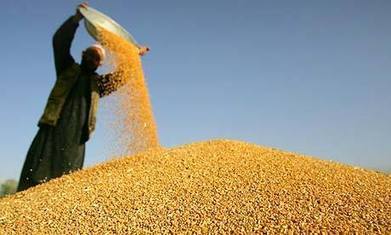In the news, the strategic reserves
department at the Agricultural Bank of Sudan (ABS) has acknowledged that lack
of storage capacity costs the country a quarter of its grain production.
The department’s director, Fadul
Hassan Mohamed disclosed that 25% of grain production was lost due to poor
storage.
Mohamed noted the gap between
sorghum production, which amounted to 4.3 million tons, and its storage
capacity of merely 650,000 tons.
Roughly a quarter of the country’s
food production is either lost or wasted every year due to weak infrastructure
including poor storage and discrepancy between storage capacity and actual
production.
In the above context, the country’s
annual wheat consumption is around 2 million tons, while its production is only
300,000 tons.
Mohamed, who was quoted by Sudan News
Agency (SUNA), revealed there are 1.2 million bags of sorghum currently in
storage on top of 1.5 million bags intended for export.
The director further added that
there is 164,000 tons of wheat in storage and pointed out the expected arrival
of an additional 100,000 tons from India this month.
Mohamed described production levels
of sorghum, wheat, millet and other grains as "reassuring" in all
states including Darfur, South Kordofan, Blue Nile and war-affected areas.
In 2010, the former minister of
agriculture, Abdel-Haleem al-Mutafi, said that Sudan targets self-sufficiency
in wheat production in five years’ time and also plans to expand output of
other grain crops.
It is very clear by now that most problems
facing the country have existed for a very long time. Although perfectly aware
of their existence, relevant authorities have failed to come up with an
established method for dealing with such issues, particularly in as vital a
sector as agriculture sector, which requires good strategic planning,
dedication and follow-up.
The main issue- in this case then-
is food lost due to weak infrastructure including poor storage, processing and
packaging facilities that lack the capacity to keep produce fresh. Subsequently
food losses also mean lost income for small farmers and higher prices for poor
consumers.
The key to the solution lies in
strengthening food supply chains, urging investment in infrastructure and
transportation, along with increased attention to food storage, processing and
packaging.
Last but not least, making a simple
effort through agricultural guidance and counseling among farmers and other
groups operating in agriculture to reduce wastage of food production.


No comments:
Post a Comment